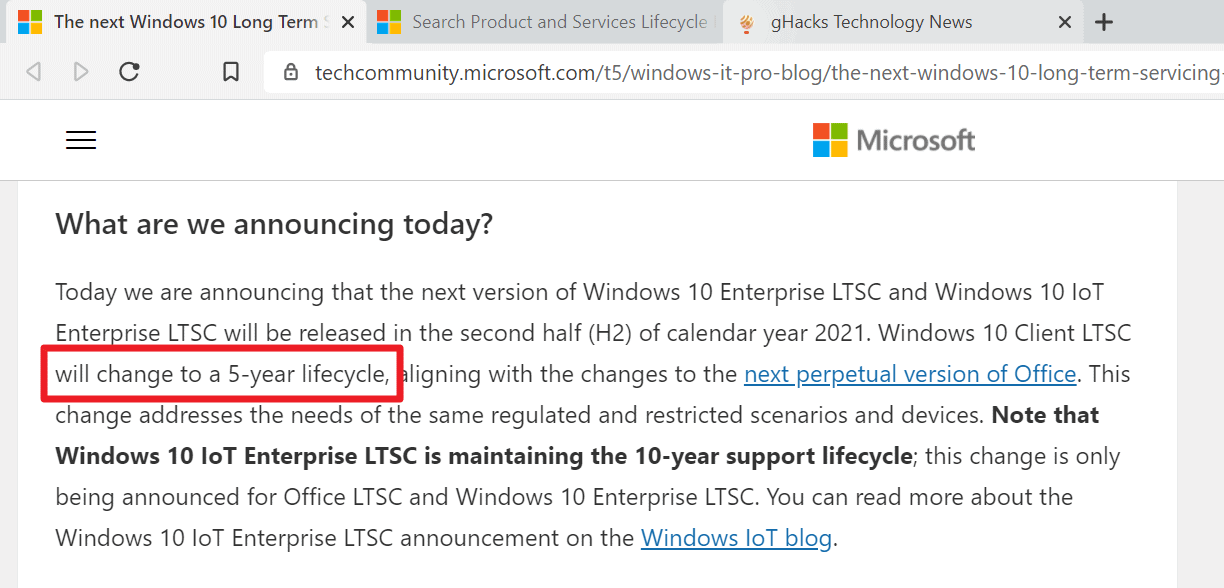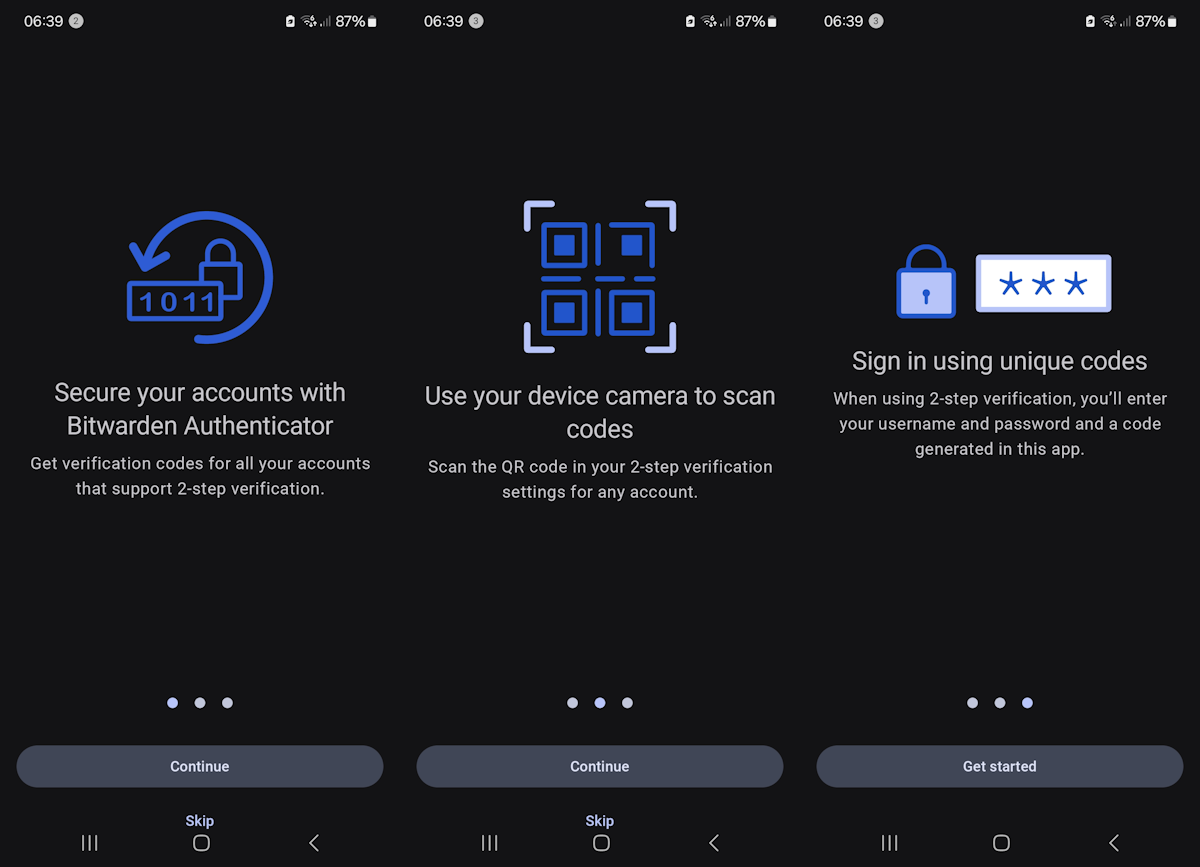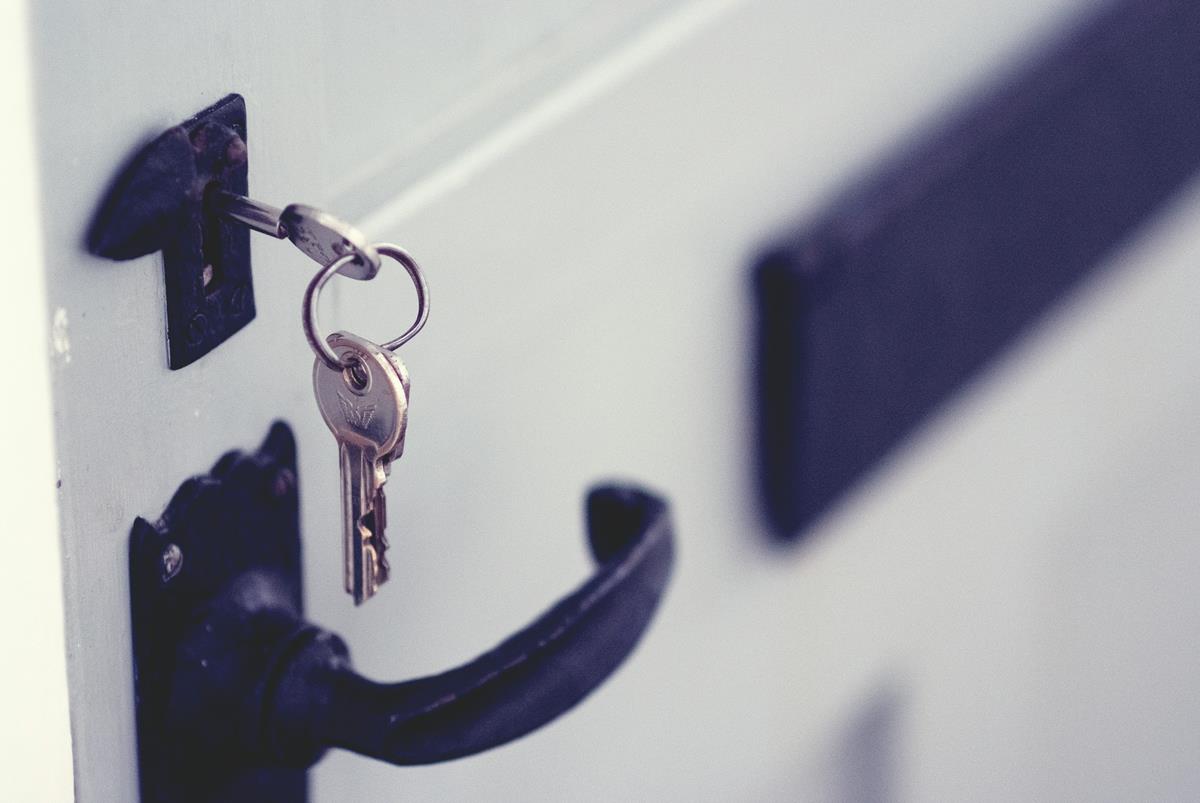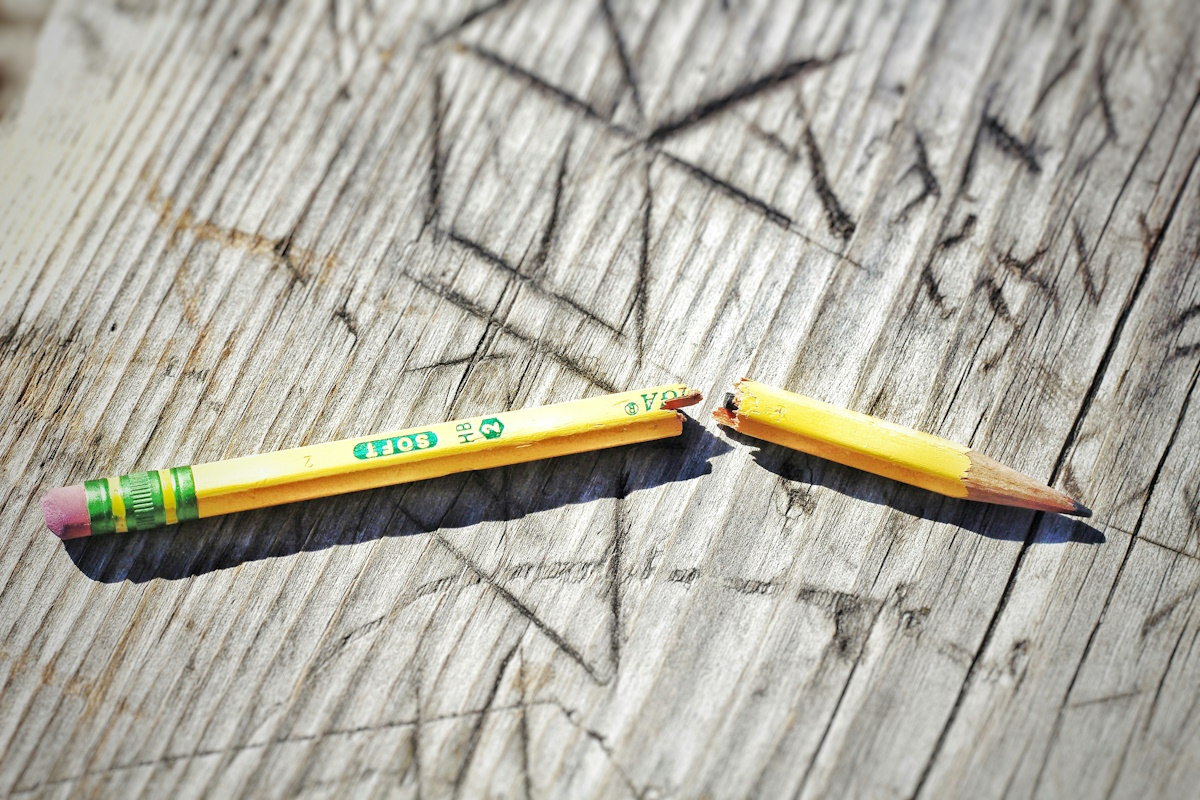Microsoft reduces Windows 10 Enterprise LTSC support to 5 years

Microsoft announced today that the next Windows 10 Enterprise Long-Term Servicing Channel version will have a reduced support lifecycle of five years.
When Microsoft released Windows 10 in 2015, it introduced Windows as a service. The main difference to previous versions of the operating system, for instance Windows 7 and Windows 8.1, was that the operating system was designed to receive regular feature updates.
In the past two years, feature updates were released twice a year. One update was larger and introduced new functionality and major changes, the other smaller and faster to install.
Next to these releases, Microsoft created long-term servicing channel releases for the Enterprise. In particular, Enterprise customers could purchase Windows 10 Enterprise LTSC or Windows 10 IoT Enterprise LTSC.

Microsoft guaranteed 10 years of support for each of the Windows 10 versions. These versions were designed for very specific scenarios, such as workstations without Internet connection.
Windows 10 Enterprise LTSC is meant for specialty devices and scenarios that simply cannot accept changes or connect to the cloud, but still require a desktop experience: regulated devices that cannot accept feature updates for years at a time, process control devices on the manufacturing floor that never touch the internet, and specialty systems that must stay locked in time and require a long-term support channel.
Starting with the upcoming Windows 10 Enterprise LTSC 21H2 release, lifecycles are reduced to a 5 year period. In other words: Windows 10 Enterprise LTSC version 21H2 will be supported until 2026; the last LTSC version released by Microsoft, Windows 10 2019 LTSC, will be supported until 2029 thanks to its 10-year support cycle. Current Windows 10 Enterprise LTSC releases will retain their 10-year support lifecycle.
The new support lifecycle is aligned with the support cycle of the next version of Microsoft Office, announced yesterday as well.
The change affects Windows 10 Enterprise LTSC only, and not Windows 10 iOT Enterprise LTSC. The two versions of Windows are "binary equivalents" according to Microsoft; the only difference is found in licensing.
Microsoft recommends that Enterprise customers switch to Windows 10 IoT Enterprise LTSC if a 10-year support cycle is required.
The company explains that it was through conversation with its customers that it decided to make the change to the support lifecycle of the upcoming product.
Through in-depth conversations with customers, we have found that many who previously installed an LTSC version for information worker desktops have found that they do not require the full 10-year lifecycle. With the fast and increasing pace of technological change, it is a challenge to get the up-to-date experience customers expect when using a decade-old product. Where scenarios do require 10 years of support, we have found in our conversations that these needs are often better solved with Windows 10 IoT Enterprise LTSC.
Now You: what is your take on the change? (via Deskmodder)





















Windows Server 2022 will remain in the 10 years lifecycle though
https://techcommunity.microsoft.com/t5/internet-of-things/windows-10-iot-long-term-servicing-channel-upcoming-availability/ba-p/2139861
Can the server stuff be stripped out? I would like Windows OS with the least changes and works like Windows 7. I don’t want any modern turds like settings, smartphone apps, mobile phone UI, MS store, etc…
It may surprise you that the Server version of Windows has always been faster than those consumer versions. And that was achieved through fewer services and progresses running in the background by default. You can easily find some tutorials on the web on making the Server version of Windows more suited to be used as your personal, every day OS.
I don’t mind the 5 years support, it’s ok by me. My only problem with the upcoming LTS is that it will be a different branch from Server. It was nice having the past two servers share the same branch with Enterprise LTS. We’ll see how it works. Dealing with a mix of Server 2012R2, Windows 7 and Windows LTS 1507 was a bit of a pain in the rear. Server 2019 and LTS 1809 being the very same OS made things so much nicer.
Those on 2016 or 2019 LTSC should not care. Once the the support is dropped Win10 is it still a decent OS to run if you have Win apps to run and know just a little about securing your environment.
Not necessarily a bad decision from Microsoft. A 5 year cycle is more common with Linux as well. After 5 years have passed, it is smarter to take stock and adjust the system/security models that were implemented in any type of organization, company or home (office).
The 10 year period for IoT is too long in my view. If there is one group of technology that needs much more scrutiny than any other group (regarding security), IoT is definitely it.
And yes, I am aware that a 5 year period makes many IoT devices much more hassle than they are worth. But that is how messed up IoT truly is and manufacturers should be held accountable for the crap they deliver.
If you look at the IoT hardware requirements you’ll notice that is not more different than all other Windows 10 editions. IoT SKU support desktop apps plus x86 – x64 desktop CPUs. in essence IoT edition is just a glorified Enterprise edition with some extra ARM SoC support…and that’s all.
https://docs.microsoft.com/en-us/windows-hardware/design/minimum/minimum-hardware-requirements-overview
Not sure why you’d expect it to be different, Windows 10, at least the core of it, uses the lowest common denominator approach.
Microsoft’s naming is totally screwed up as their IoT isn’t meant for what most people would consider IoT, that being loads of small devices all connected to WiFi, Microsoft’s idea of LTSC IoT are things like ATM’s, CNC machines, Medial devices, and other non-connected or seriously locked down devices that run a single program and from a end user perspective seem to not be running Windows.
you are right on this. Microsoft doesn’t care about the 5% or less of the market in this situation. The devices that actually need the 10 year life are generally equipment that is hundreds of thousands $ or more and you are not going to retire this equipment after 5 years. Closer to 20. And now they are forcing us to use one of 5 vendors to buy the 10 year license. That is ridiculous.
They must realized no one wants their Home or Pro adware editions. Everyone flocking to LTSC for a proper stable OS.
Absolutely hilarious how people with bloated egos like you think they speak for ‘everyone’.
@Lars, people have bought winbloat with their money, sooner or later everyone with learn about what microsoft is doing to them. Pay and be the product at the same time. More and more people know about it every day.
Hah! Right, sure… Keep deluding yourself that the average clueless user is moving to LTSC or Linux. People like you are so out of touch with reality it never ceases to amuse me.
WOW!
The guy talking about others egos thinks that the average user is a moron.
Clearly you must be so smart and superior than most users to just assume
such a thing.
PURE HYPOCRISY!
I’m waiting for someone to post that 2019 LTSC is the best.
It is a damn fine OS, LTSC 1809. It scales properly from a C2D machine with 4GiB RAM and a GTX9800, to a low power Intel Cherry Trail tablet and 3GiB of RAM, all the way up to a dual Xeon, 28-core 56-thread, 256GiB RAM and a TITAN V workstation, mainly used for rendering multiple 2160p60fps streams at once in real time, 24/7, with one restart per month for maintenance.
A true successor to Windows 7 7601, the previous OS which was capable of this as well. Windows 8.1, Windows 10 Pro/EnterpriseSAC versions 1703, 1709, 1803 and 1903 would usually inherit a glitch or a terrible memory leak wthin 24 hours, which would only go away with a restart of the whole system, or, in the best case scenario, restarting the affected process, although this would result in other weird glitches or futher performance hindrance.
Really curious about these terrible memory leaks you’re supposedly facing in every Win10 release.
By someone you mean Yuliya? Almost can see tears in her eyes :D
I are best.
Still using 1709 Enterprise on my main PC. 20H1 on another and Windows 7 on another. I’m not theorizing about 20H1 having more problems than 1709 (Modern Standby, network adapter settings screwed up in the GUI, bunch of new unfinished features, unfinished transition to the new GUI, even more spyware “enhancements”.) Windows updates have overall caused more problems than they have solved. There isn’t a single new feature that is of any use to me. Edge? More spyware? MS Store? MS Cloud services I’ll never use? Don’t need any of that.